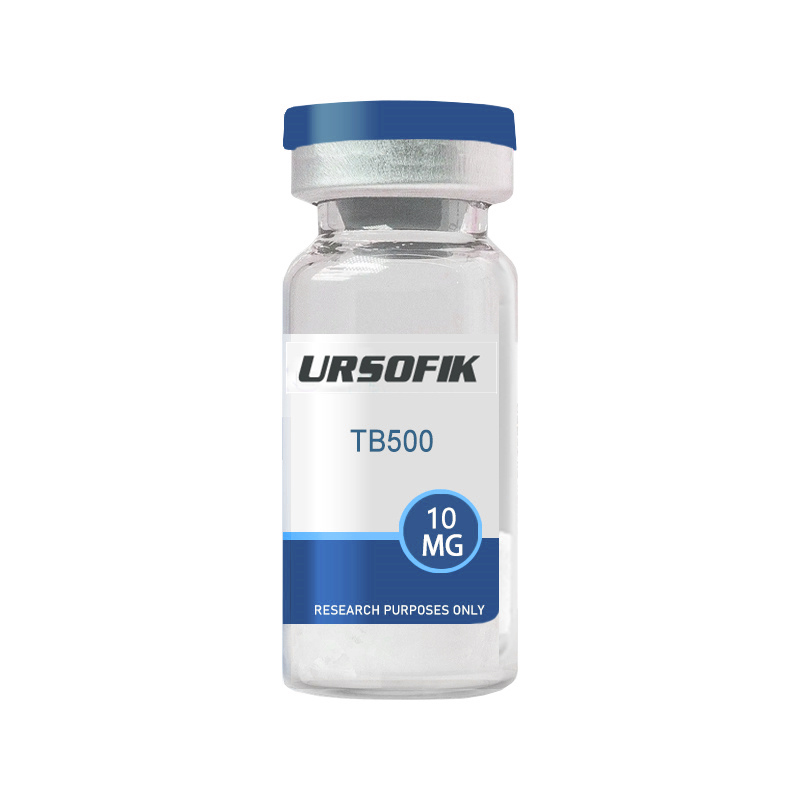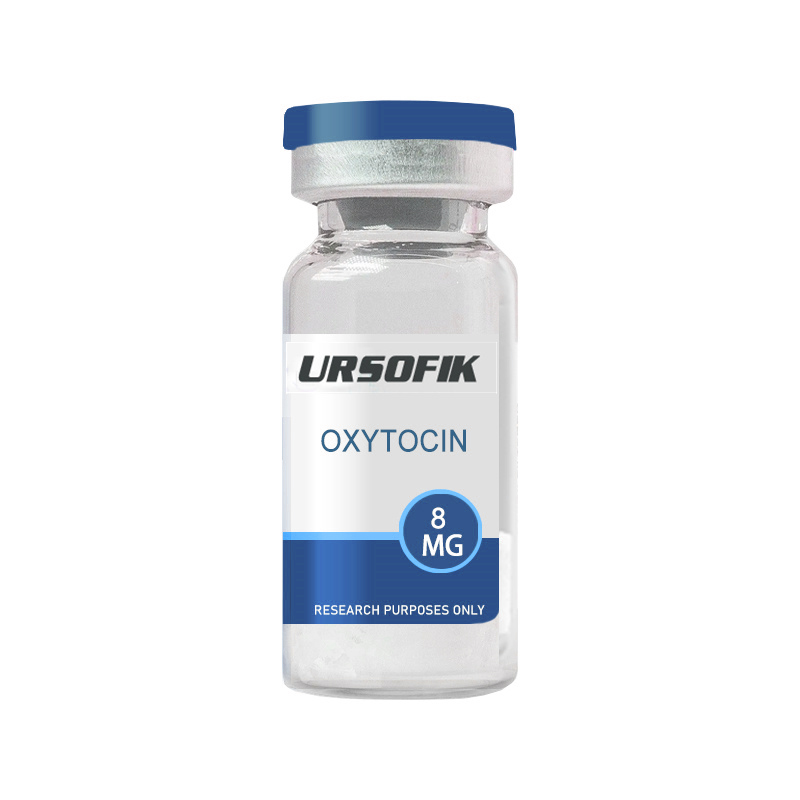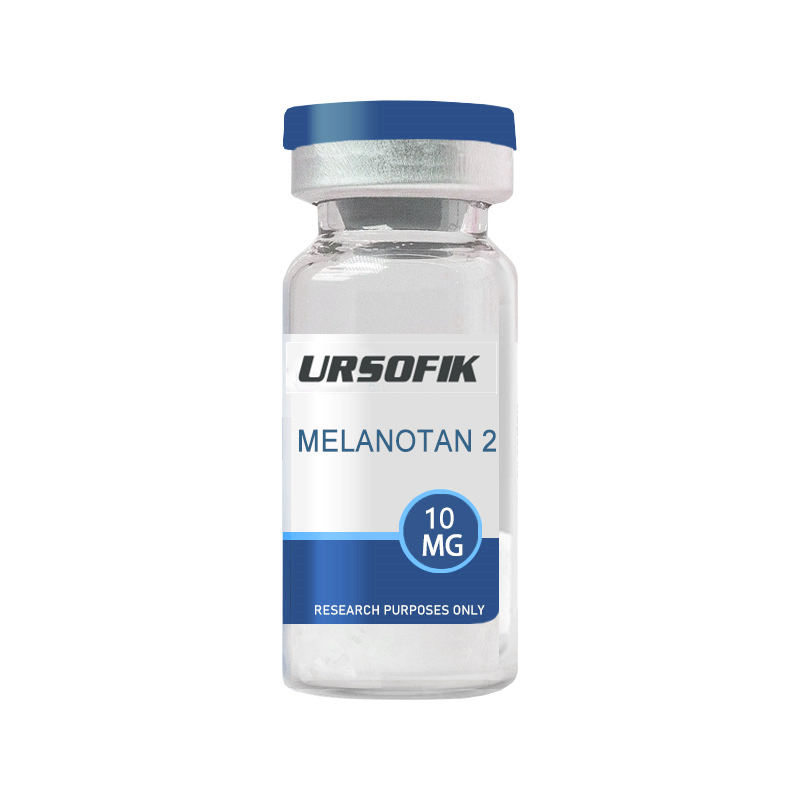

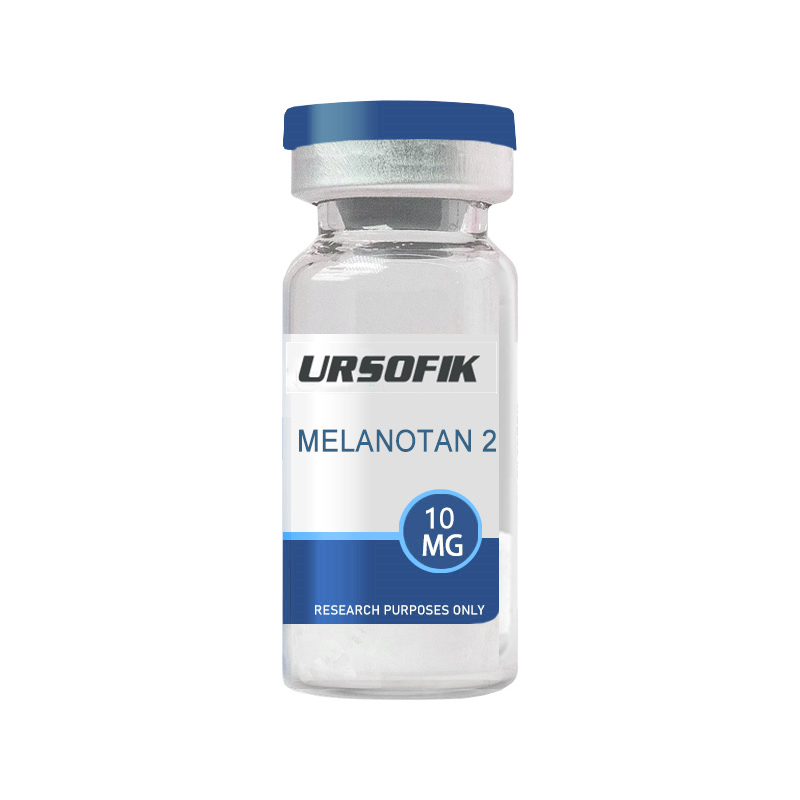
Mechanism of Action: Melanotan II is an agonist of melanocortin receptors 1 and 4 (MC-1R and MC-4R), which respectively regulate melanin production and male erectile function. It is also believed to stimulate MC-3R, which affects appetite and energy levels. Notable Studies: · Evaluation of melanotan-II, a superpotent cyclic melanotropic peptide in a pilot phase-I clinical study · Melanocortin receptor agonists, penile erection, and sexual motivation: human studies with Melanotan 2 · An unhealthy glow? A review of Melanotan use and associated clinical outcomes What is Melanotan 2? Melanotan 2 is a synthetic analogue of alpha-melanocyte-stimulating hormone (α-MSH). The molecule was first developed in the 1980s by University of Arizona researchers, who were looking to clarify the nature and role of the melanocortin receptors in physiological functions. Namely, the peptide was intended to be used as a sunless tanning agent, but was subsequently found to strongly affect sexual function and appetite . Melanotan 2 (MT-II) should not be confused with another α-MSH analogue, melanotan I (M ...
Read More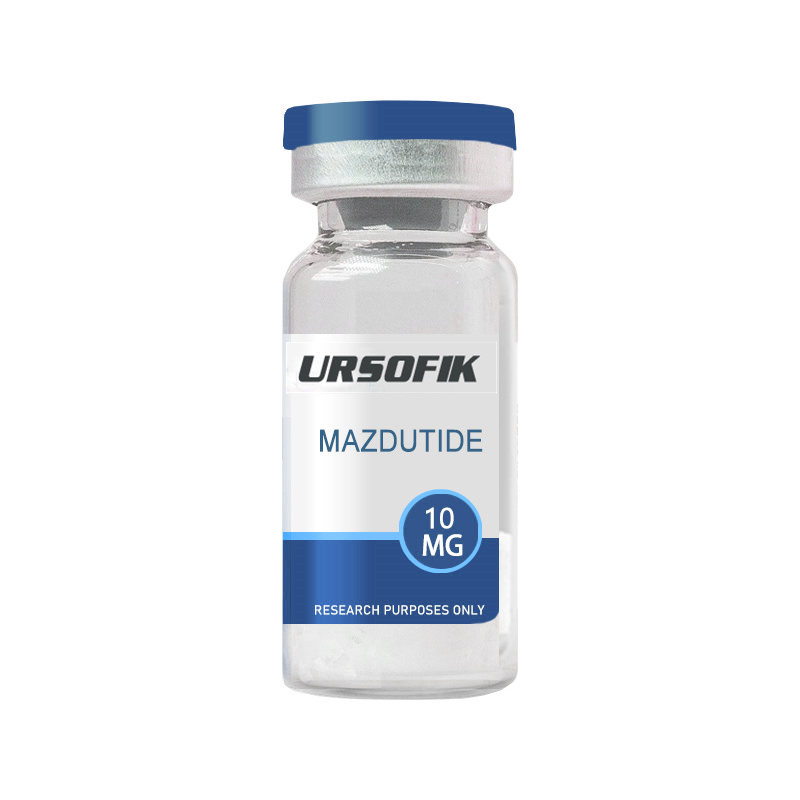
What is Mazdutide? Mazdutide 10MG, commonly referred to as a multi-agonist peptide, is an investigational compound being studied for its potential benefits in obesity and blood sugar management. Similar to compounds such as tirzepatide and semaglutide, mazdutide is known for its high efficacy. Researchers believe that it may significantly enhance weight loss when combined with a proper diet and exercise regimen. Additionally, studies are exploring its effects on metabolic regulation and conditions such as hypertension. How does Mazdutide work? Mazdutide stands out in obesity research due to its multifaceted mechanism of action: • Multi-receptor agonist Mazdutide targets multiple receptors involved in regulating metabolism. This action slows gastric emptying, lowers post-meal blood sugar levels, and promotes satiety. As a result, it can reduce food intake and improve energy balance. • Enhances satiety By acting on the satiety center of the brain, mazdutide helps reduce appetite and prolong feelings of fullness. This can reduce calorie intake and support weight loss efforts. • Glucose Optimization Mazdutide slows gastric emptying and regulates the release of ...
Read More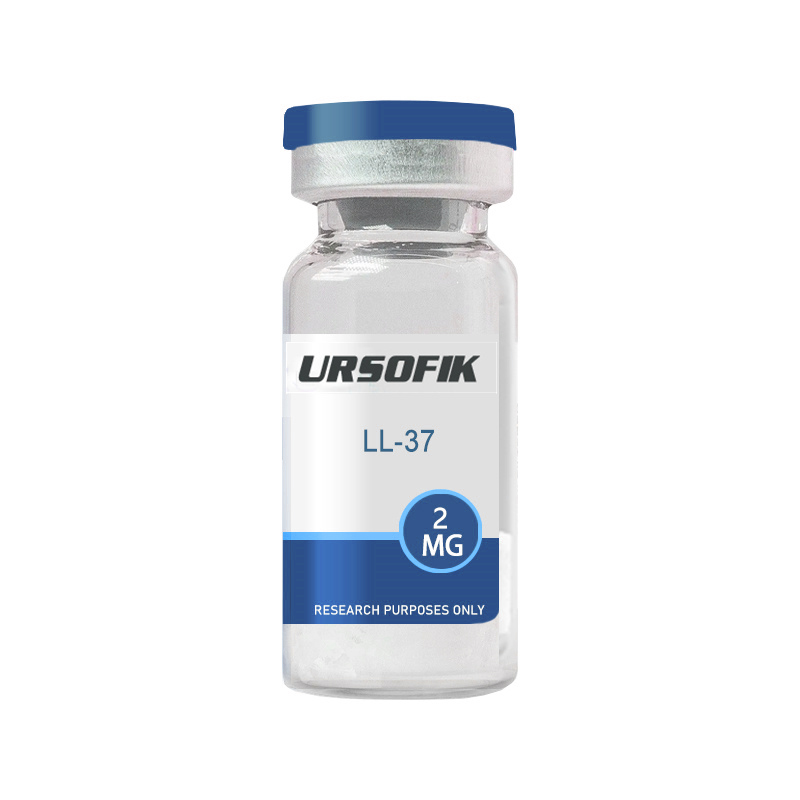
What is LL-37? LL-37, also known as CAP-18 (tensin-activated antimicrobial protein 18), is an antimicrobial peptide expressed in nearly all tissues and organs. It is produced by many cell types, including macrophages, airway epithelial cells, skin and ocular epithelial cells, and natural killer (NK) cells. Since its discovery in 1995, LL-37 has been studied in a number of ways. These studies have shown that LL-37 has anticancer effects in colon and gastric cancer. This natural peptide may also modulate the development of inflammatory and autoimmune diseases. LL-47 has been reported to exert a protective effect in a mouse model of collagen-induced arthritis. It has also been found to kill gram-negative bacteria through direct antimicrobial activity as well as regulation. In addition, it has been shown to promote wound closure in lung disease. LL-37 has also been shown to downregulate signaling of specific Toll-like receptors (TLRs), thereby reducing the production of pro-inflammatory cytokines. It also exhibits anti-inflammatory effects, primarily by blocking signaling in Gram-negative bacteria. The following are the functions that LL-37 has been shown to have: Regul ...
Read More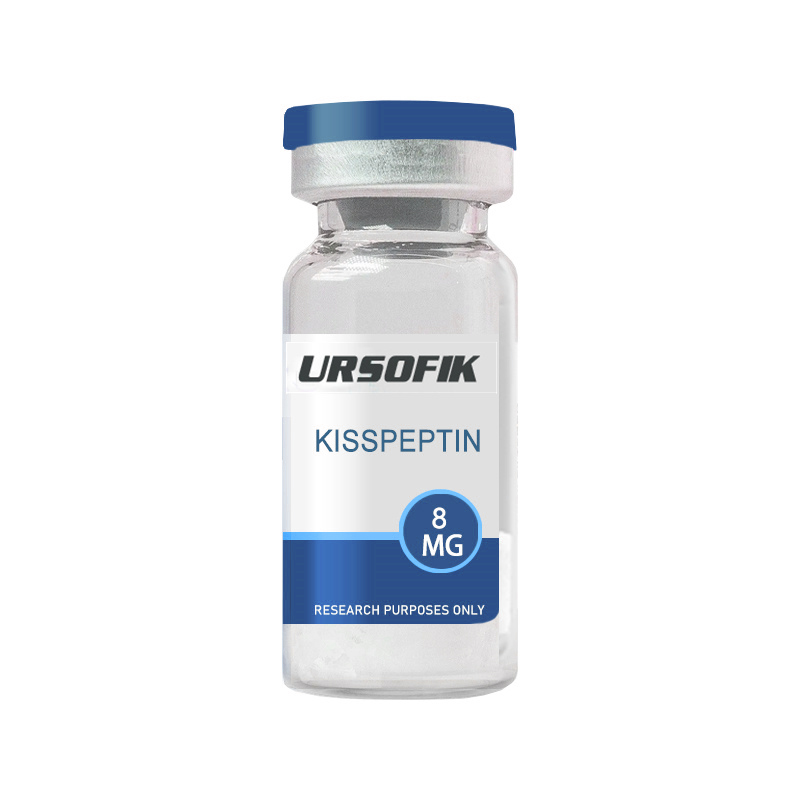
What is Kisspeptin-10? Kisspeptin-10 is an isoform of kisspeptin, the protein that controls your reproductive hormones. It performs essentially the same functions as its parent protein but has a different amino acid sequence. For instance, it has 10 amino acids compared to kisspeptin’s 145. Kisspeptin-10 is processed from Kisspeptin-54, another kisspeptin variant. Research has shown that it has a quicker onset of action than the longer kisspeptin isoform. While both isoforms have similar bioavailability, Kisspeptin-10 appears to have a shorter half-life. In clinical studies, Kisspeptin-10 was found to increase luteinizing hormone (LH), follicle-stimulating hormone (FSH), and testosterone in men. The peptide was also shown to stimulate gonadotropin release in women during the pre-ovulatory phase of the menstrual cycle. Kisspeptin-10 has also been shown to reactivate the hypothalamic-pituitary-gonadal axis in women with chronic amenorrhea, a condition characterized by missing one or more menstrual periods. The kisspeptin peptide induced a significant increase in LH and FSH levels. How Does Kisspeptin-10 Work? Ki ...
Read More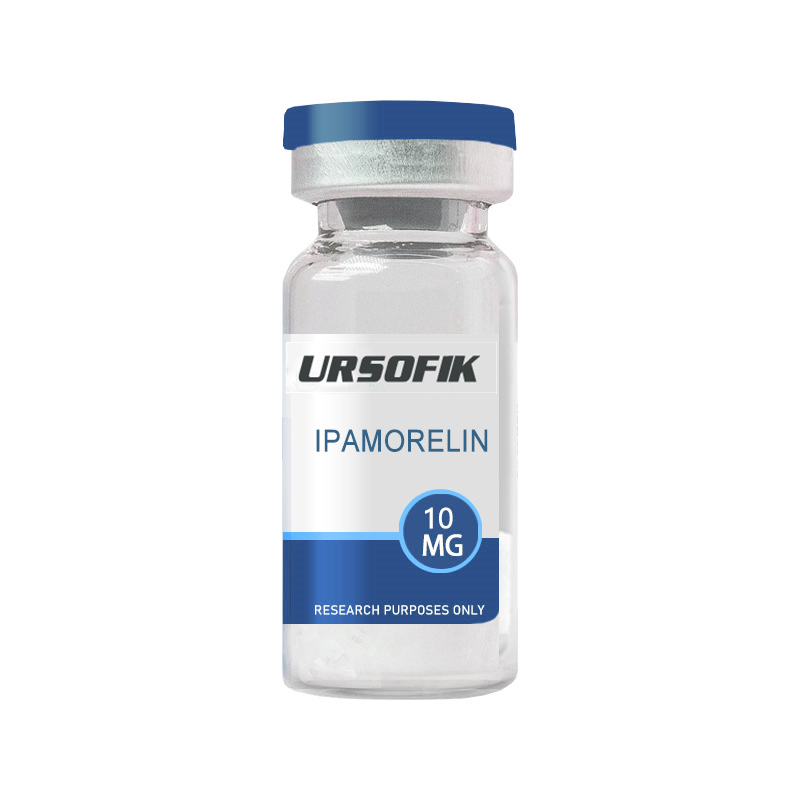
Compound Class: Peptide Mechanism of Action: Ipamorelin is a selective growth hormone secretagogue and ghrelin receptor agonist that triggers and stimulates growth hormone production by mimicking ghrelin. It binds to ghrelin receptors, stimulating growth hormone release, and inhibits somatostatin and suppresses its effects. Notable Studies: · Ipamorelin, the first selective growth hormone secretagogue · The growth hormone secretagogue ipamorelin counteracts glucocorticoid-induced reductions in bone formation in adult rats · The GH secretagogues ipamorelin and GH-releasing peptide-6 increase bone mineral content in adult female rats What is ipamorelin? Ipamorelin is a laboratory-made compound known as growth hormone-releasing peptide. It stimulates the body to release growth hormone, which promotes systemic growth of muscle, bone, vascular system, and other cells and body tissues. Ipamorelin is unique among growth hormone-releasing peptides in that, unlike most growth hormone-releasing peptides, it does not activate the body's natural stress response. This gives ipamorelin an advantage over similar compounds. However, research on ipamorel ...
Read More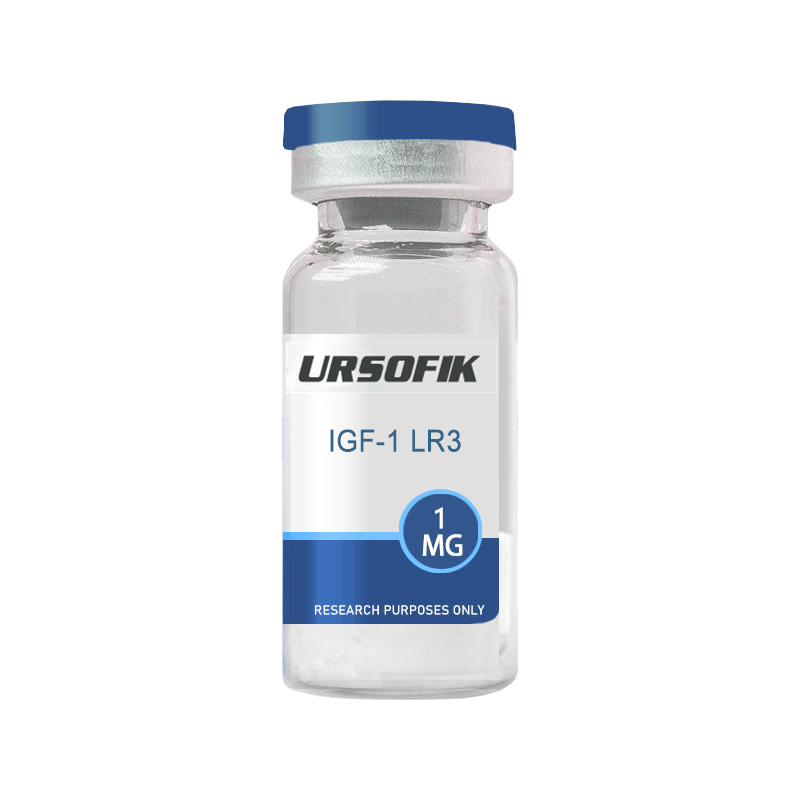
What is IGF-1 LR3? IGF-1, or insulin-like growth factor, is a potent growth factor found in mammalian blood. This peptide manages and regulates growth hormone (GH) levels. IGF-1 LR3 is the abbreviated form of IGF-1, which some researchers consider to be the most potent growth factor. IGF-1 LR3 is a chemically altered amino acid chain of 83 amino acids. At position 3 on the chain, Glu(E) is replaced by Arg(R), resulting in the name LR3. This substitution at position 3 prevents IGF-1 from binding to proteins, thereby extending its half-life. Possible Applications of IGF-1 LR3 Insulin-like growth factors have been extensively studied and tested clinically. Below we will highlight some potential future research implications of IGF-1 LR3, known as IGF-binding protein. Possible Promotion of Cell Division Like IGF-1, IGF-1 LR3 is a potential potent stimulator of cell proliferation and division. Its main potential effects are thought to be on connective tissues such as muscle and bone. But it may also promote cell division in kidney, liver, skin, nerve, lung, and blood tissue. Of note, studies have shown that IGF-1 LR3 and all IGF-1 deriv ...
Read More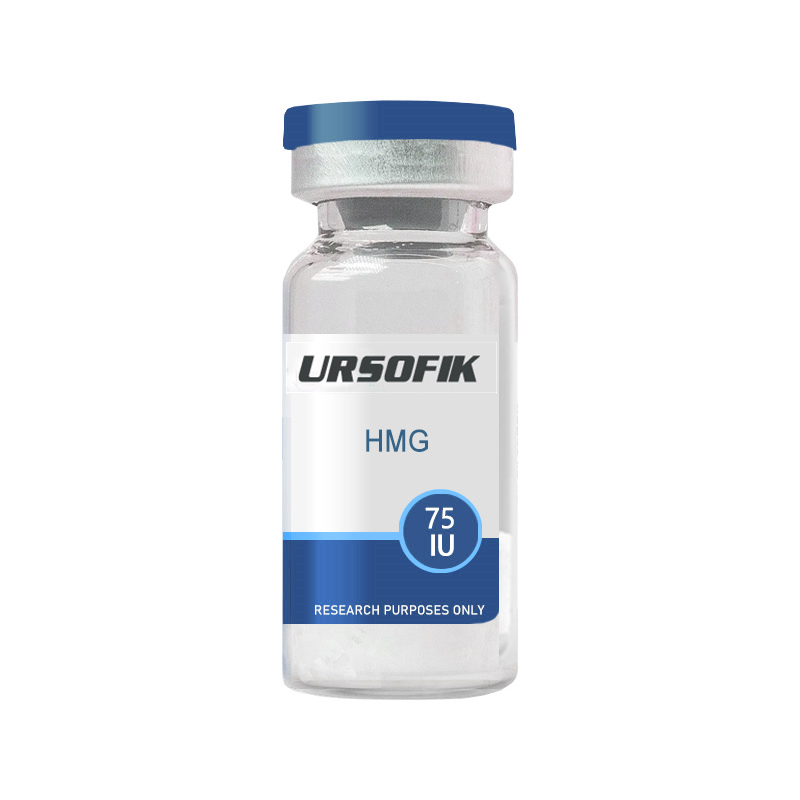
HMG (Human Menopausal Gonadotropin) – Product Information HMG, also known as human menopausal gonadotropin, was originally formulated to help women get pregnant. It is considered a fertility drug chemical that stimulates the secretion of follicle stimulating hormone (FSH) and luteinizing hormone (KH) in women, thereby increasing the chances of ovulation. On the other hand, the use of HMG has changed and is currently being studied for its potential effects on testosterone production in men. Ultimately, HMG can help users increase muscle mass and ultimately improve sexual health. Specific reproductive health centers can provide training on how to use HMG for female subjects. Although HMG for sale can provide the benefits listed above, we should not consider this experimental chemical a very successful drug. What is HMG? H uman menopausal gonadotropin (HMG) is being studied experimentally as a treatment for female fertility issues. This experimental drug is excreted in the urine of postmenopausal women. It is also known as gonadotropin. It contains follicle stimulating hormone (FSH) and luteinizing hormone (LH), which help healthy ovaries produce eggs. HMG is often used with another h ...
Read More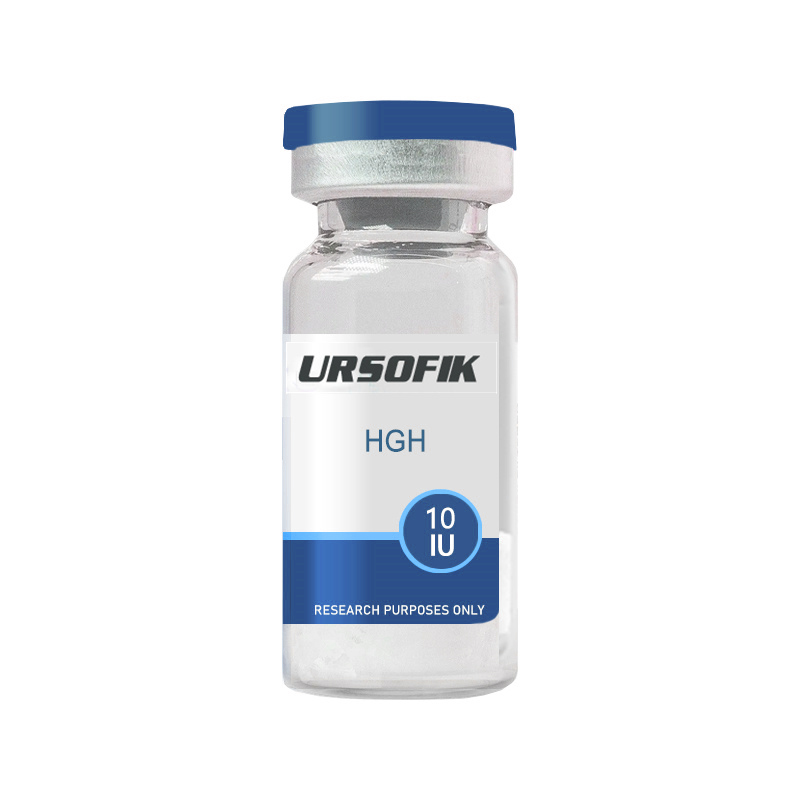
Is HGH a steroid? Is HGH (human growth hormone) a steroid? No, HGH is a peptide hormone, not a steroid. Peptides are substances made up of two or more amino acids. People often confuse human growth hormone (HGH) with other substances that can improve athletic performance, but HGH is not a steroid. What is HGH Your body produces HGH in the pituitary gland. Your body produces new cells every day to replace those that degenerate and die over time. HGH helps your body produce these replacement cells. When your body can't repair its cells or produce enough new cells, you begin to show signs of aging. What happens when your body starts to produce less HGH As we age, the pituitary gland slows down the production of growth hormone. This process can begin in our thirties. By our forties and fifties, the body begins to feel the effects of this growth hormone deficiency. You may notice one or more of the following signs of low growth hormone: It becomes increasingly difficult to maintain an ideal weight through diet, exercise, and healthy habits. Even people who have always been "naturally thin" may find themselves gaining weight and not wanting to lose it. As a result, you may feel de ...
Read More
What does the hCG hormone do? Human chorionic gonadotropin is a hormone that is primarily produced by the syncytiotrophoblast cells of the placenta during pregnancy. The hormone stimulates the corpus luteum to produce progesterone to maintain the pregnancy. The pituitary gland, liver, and colon also produce small amounts of hCG What does hCG do for men? For men or adolescent boys, HCG helps with testosterone and sperm production. HCG is also used to treat boys with cryptorchidism, a specific testicular birth problem. All About HCG Levels During Pregnancy | What is hCG? If the hCG level is below 5 mIU/mL, it is considered not to be pregnant, and if it is above 25 mIU/mL, it is considered to be pregnant. If the hCG level is between 6 and 24 mIU/mL, it is in the gray area and you may need to retest to see if the level rises to confirm pregnancy. Are there any side effects of hCG? This medicine can cause ovarian hyperstimulation syndrome (OHSS), which can be life-threatening. If you experience symptoms such as bloating, diarrhea, severe nausea, stomach pain, rapid weight gain, or vomiting, see your doctor right away. ...
Read More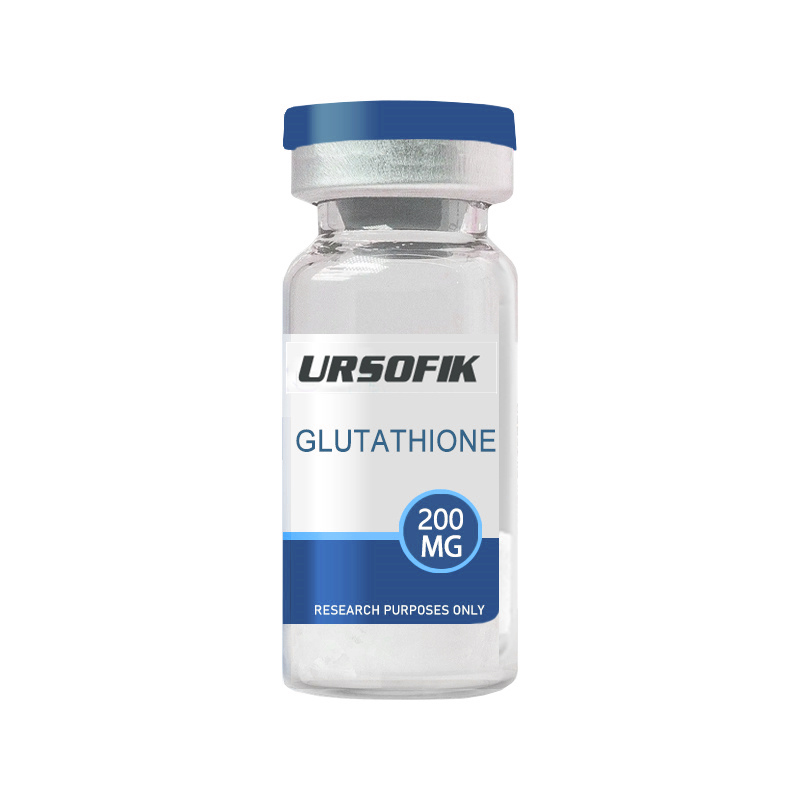
L-Glutathione Overview L-Glutat hione, also known as GSH, is a tripeptide composed of the amino acids glycine, cysteine, and glutamic acid. It is synthesized by the liver and plays a role in multiple bodily functions such as tissue regeneration, chemical and protein production, and immune system support. Glutathione acts as a powerful antioxidant, shielding cells from harm caused by free radicals and reactive oxygen species. It is present in various organisms, including plants, animals, fungi, bacteria, and archaea. Glutathione is a Powerful Antioxidant Glutathione (GSH) is a powerful antioxidant that is found in every cell of the body. It helps stave off the impact of oxidative stress, which may, in turn, reduce the risk of developing diseases such as diabetes, cancer, and rheumatoid arthritis. It can act directly as an antioxidant to protect cells against free radicals and pro-oxidants. GSH is involved in multiple cellular processes including protein folding, safeguarding protein thiols from oxidation and crosslinking, breaking down proteins with disulfide bonds, regulating cell cycle and proliferation, metabolizing ascorbate, inducing apoptosis, and promoting ferroptosis. ...
Read More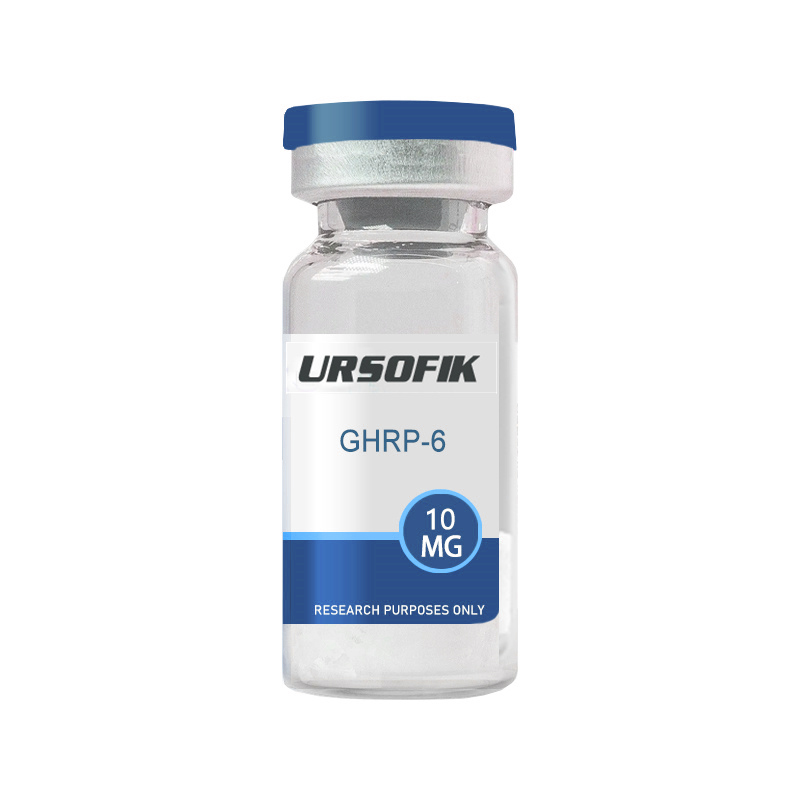
Product Description Hexapeptide-2 reduces the production and distribution of melanin to keratinocytes, brightens the skin, fights dark spots and hyperpigmentation, and evens out skin tone. Plus, it reduces the appearance of fine lines and wrinkles. Hexapeptide-2 is a safe and useful ingredient for after-sun repair, skin lightening and anti-aging skin care applications. It can be used in whitening cream, skin color balance and brightening products.Hexapeptide-2 can reduce the aging level of cells by inhibiting the activity of β-galactosidase, such as the reduction of collagen synthesis. Therefore, hexapeptide-2 also has anti-aging and anti-wrinkle effects. About us MOL Changes is based on bioactive peptide R&D and production, providing high end peptide molecule biologics for pharmaceutical and cosmetic companies. Already occupying 30% share of Melanotan-II tanning peptide in China's export market, we have passed ISO; Halal; Kosher; FDA; SGS and many other certifications for the record. In the future, MOL Changes' vision is to become a global leading company in individual bioactive peptide products, and to establish a strong product matrix in the peptide field to help our customers ...
Read More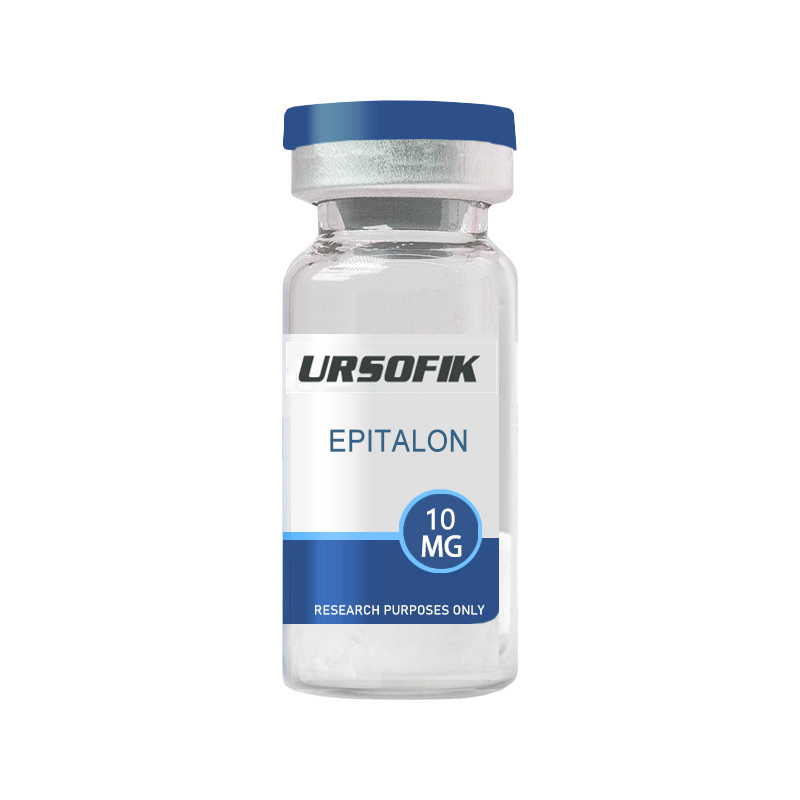
What is Epitalon (Epithalon) Peptide? Epitalon , also known as Epithalon or Epithalone, is a synthetic version of a naturally occurring polypeptide called Epithalamine, which is produced in the pineal gland. This tetrapeptide, consisting of four amino acids bound together, plays a significant role in the body’s ability to combat aging and promote rejuvenation. Discovered by Russian scientists Vladimir Khavinson and Vladimir Anisimov, Epitalon has been the subject of numerous studies, primarily focusing on its potential to extend lifespan and improve health by stimulating the production of telomerase, an enzyme that aids in the maintenance and repair of telomeres. Epitalon and Telomere Length Epitalon is a synthetic peptide known for its potential to influence the aging process by affecting telomeres, the protective caps at the ends of chromosomes. Research has shown that Epitalon can stimulate the production of telomerase, an enzyme that plays a key role in maintaining and extending telomeres. This process is crucial because as cells divide, telomeres naturally shorten, leading to aging and eventual cell death. By promoting telomerase activity, Epitalon may help ...
Read More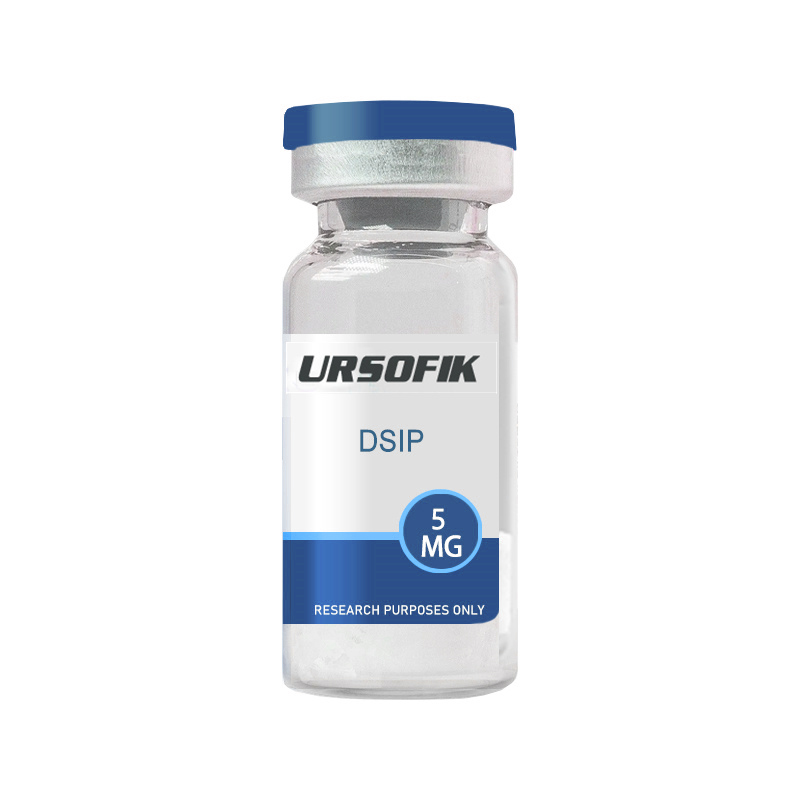
DSIP Research Overview Delta Sleep-Inducing Peptide (DSIP) is a peptide with a molecular weight of 850 daltons. It has the amino acid motif: N-Trp-Ala-Gly-Gly-Asp-Ala-Ser-Gly-Glu-C. DSIP plays various roles, such as endocrine regulation, disease and medicine, and sleep induction. However, the connection between DSIP and sleep is not fully understood due to the lack of isolation of the DSIP gene, protein, and potential receptor. Research has been conducted on the effectiveness of DSIP in treating insomnia, pain, and withdrawal. DSIP has shown the ability to counteract opiate receptors, leading to a significant reduction in opioid and alcohol dependence. Clinical trials are currently underway to explore its potential in treating withdrawal syndrome. Additionally, DSIP has been found to alleviate narcolepsy and restore disrupted sleep patterns in certain studies. DSIP and Sleep Research Delta sleep-inducing peptide (DSIP) is a nonapeptide that was discovered in 1977 for its ability to stimulate slow or delta wave sleep. DSIP has been studied for its potential therapeutic effects on sleep and pain. Here are some key findings: A study was con ...
Read More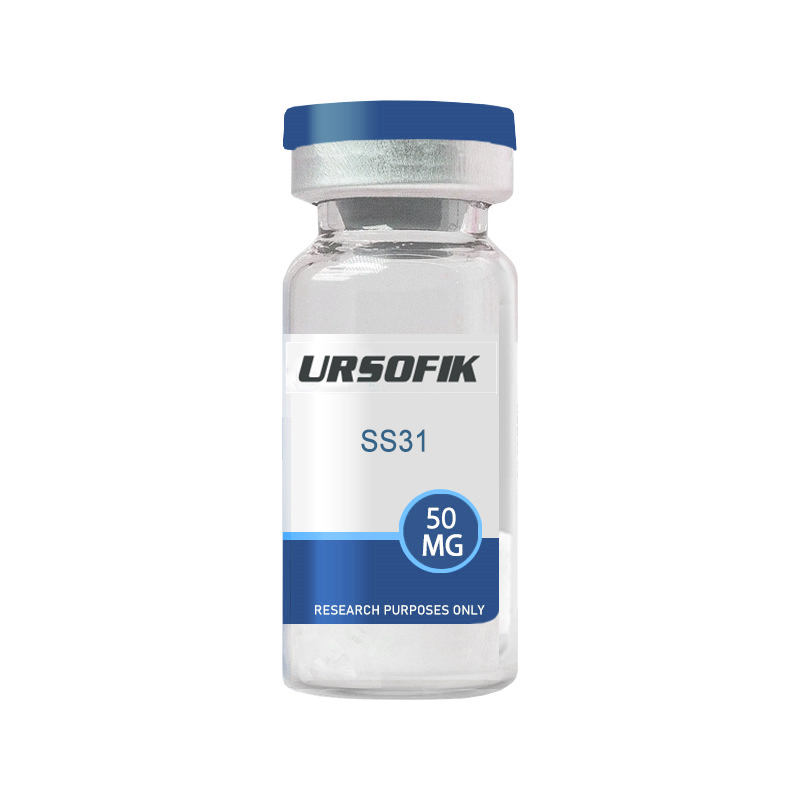
SS-31 Research SS-31 (also called elamipretide) is a peptide that specifically targets mitochondria. Clinical evidence indicates that SS-31 demonstrates promise in addressing numerous medical conditions stemming from mitochondrial dysfunction. SS-31 Mechanisms of Action SS-31 operates within cells by selectively aggregating inside the inner mitochondrial membrane, where it binds to cardiolipin, a critical component of mitochondrial structure and function. By binding to cardiolipin, SS-31 helps maintain the shape of the mitochondria’s inner folds, known as cristae, which facilitates their energy-producing capabilities. SS-31 also functions as a potent antioxidant, neutralizing damaging reactive oxygen species (ROS). This action helps to prevent oxidative stress and maintain mitochondrial function. Further, SS-31 promotes the flow of electrons through the mitochondrial respiratory chain, which boosts ATP production – the cell’s energy currency. Lastly, SS-31 has been shown to prevent cell death by inhibiting the activation of pro-apoptotic proteins and preserving mitochondrial integrity. SS-31 and Mitochondrial Dysfunction Mitochondria are known as “powerhouses” within cells and play ...
Read More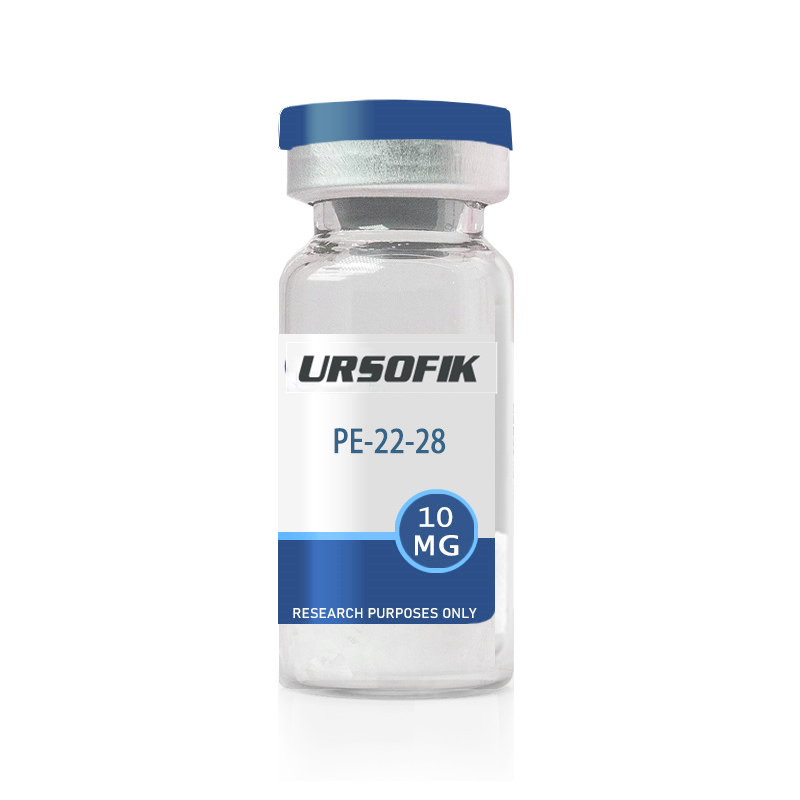
PE-22-28 Research PE-22-28 is a synthetic derivative of the naturally occurring peptide Spadin, which binds to TREK-1, a protein found in areas of the brain that control mood, memory, and learning. It is being investigated for its potential benefits in treating depression, improving memory and learning, aiding stroke recovery, and potentially combating neurodegenerative diseases such as Alzheimer’s. PE-22-28 and Treatment of Depression PE-22-28 has shown promising results in the treatment of depression. The peptide specifically blocks the TREK-1 channel, a mechanism that has been linked to antidepressant activity. In comparison to spadin, PE-22-28 has demonstrated better specificity and affinity for the TREK-1 channel, with an IC50 (half maximal inhibitory concentration) of 0.12 nM versus 40-60 nM for spadin. In behavioral models of depression, such as the forced swimming test, mice treated with PE-22-28 showed a significant reduction in immobility time, indicating an antidepressant effect. Furthermore, PE-22-28 was found to have improved in vivo stability and bioavailability compared to spadin, maintaining its activity for up to 23 hours instead of 7 hours. PE-22-28 Stimulates Neuro ...
Read More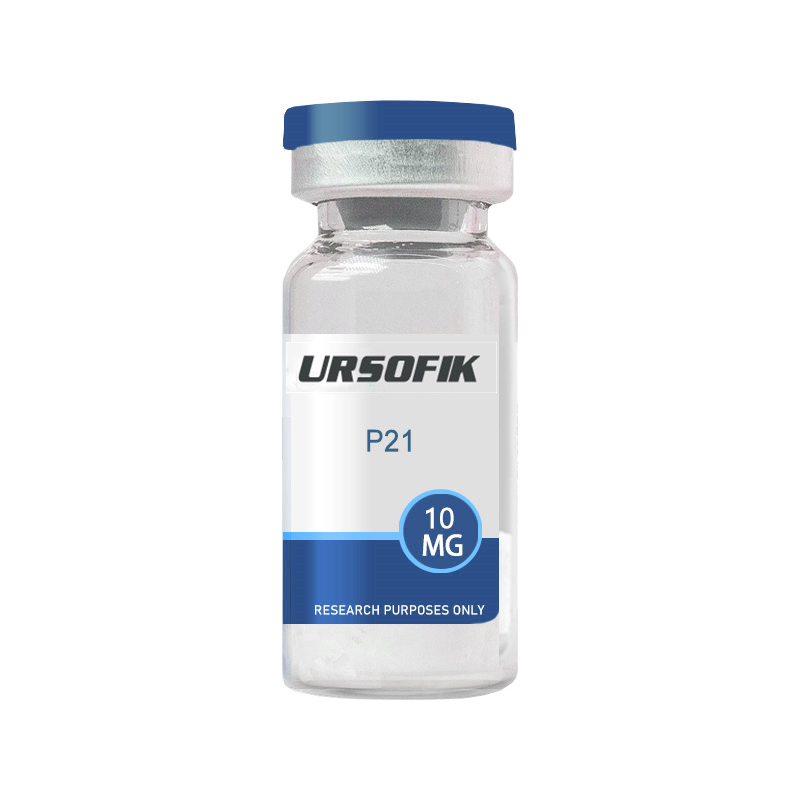
what is P21 P21 is a modified synthetic CNTF analog. CNTF is a natural protein mediator of neuronal growth in humans. The effects of CNTF have been studied primarily in the nervous system, although there are receptors for the peptide in other parts of the body, such as bones. Studies have shown that it can promote the synthesis of neurotransmitters and the growth of neurites. It can also protect neurons and their supporting cells from inflammatory attacks. In addition to its neurotrophic effects, CNTF can increase satiety, thereby reducing food intake. CNTF and cerebrolysin are not the same molecule. P21 is also not the same as cerebrolysin. It is discussed below and compared to P21. Recombinant CNTF was developed under the brand name Axokine. It is being tested for the treatment of amyotrophic lateral sclerosis and is not currently available for sale. Interestingly, the body quickly develops antibodies to Axokine, suggesting that it may be possible to use P21 and exogenous CNTF together in some cases to increase CNTF levels while keeping antibody activity to a minimum . What does P21 do? In simple terms, P21 can enhance cognition and protect the central nervous system from dam ...
Read More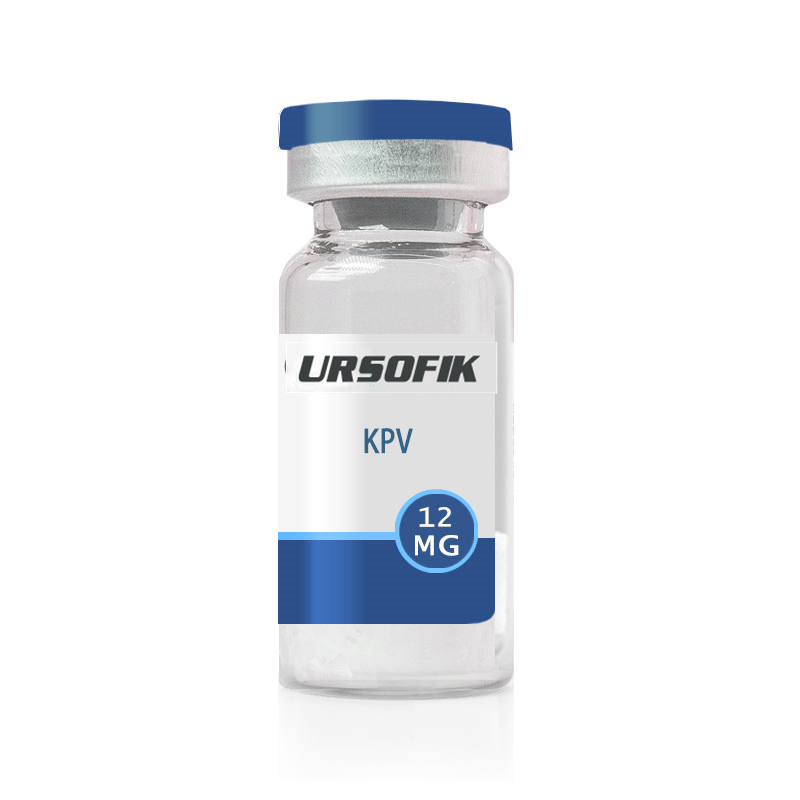
KPV Peptide Research KPV PEPTIDE AND INTESTINAL INFLAMMATION The primary subject of KPV research has been focused on its potential for reducing intestinal inflammation. In mouse models of inflammatory bowel disease (IBD), it appeared to reduce inflammatory infiltrates, MPO activity, and overall histological evidence of inflammation. KPV appeared to help mice to recover faster and gain weight. Delivery of KPV using nanoparticles functionalized with hyaluronic acid appeared to help direct inflammation to targeted intestinal locations. Thus the suppression of TNF-alpha may reduce inflammation and cause mucosal healing in mice. The researchers note that: “These results collectively demonstrate that our HA-KPV-NP/hydrogel system has the capacity to release HA-KPV-NPs in the colonic lumen and that these NPs subsequently penetrate into colitis tissues and enable KPV to be internalized into target cells, thereby alleviating ulcerative colitis.” Studies have suggested that the peptide also may reduce NF-kappaB and mitogen-activated protein kinase (MAPK) activity. TNF-alpha, NF-kappaB, and MAPK inhibition together ameliorate the inflammatory changes in the intestine. Mice exposed to KPV appeared to exhibit less colonic infilt ...
Read More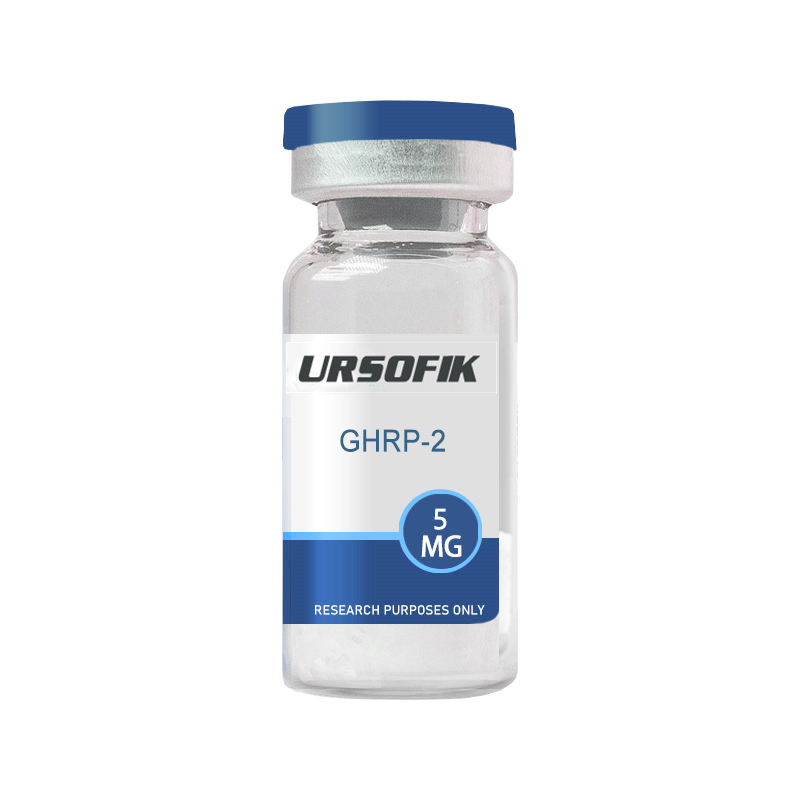
GHRP-2 Research GHRP-2 and Muscle Structure Studies in yaks have shown that the GHRP-2 peptide appears to stimulate muscle growth in two ways: by enhancing protein synthesis and accumulation, and by reducing protein degradation. [3] Studies have shown that GHRP-2 may help overcome natural growth limitations in yaks due to food deprivation, adverse environmental conditions, and disease. The researchers also suggest that "GHRP-2 enhances muscle protein deposition primarily by upregulating protein synthesis pathways." The most important observation is that GHRP-2 may reduce muscle atrophy by inhibiting atrogin-1 and MuRF1 proteins, which are thought to regulate muscle degradation pathways. GHRP-2 and the Heart Studies in fetal heart cell culture lines have suggested that GHRP-2 and its analogs (GHRP-1 and GHRP-6) may help protect heart cells by minimizing apoptosis, or programmed cell death. [4] The peptide appears to protect the heart muscle from reduced blood and nutrient supply, which in some cases can trigger cardiac arrest. Studies of the GHRP-2 analog Hexarelin have shown that these peptides associate with specific receptors. It has been hypothesized that the receptor CD36 may play a promin ...
Read More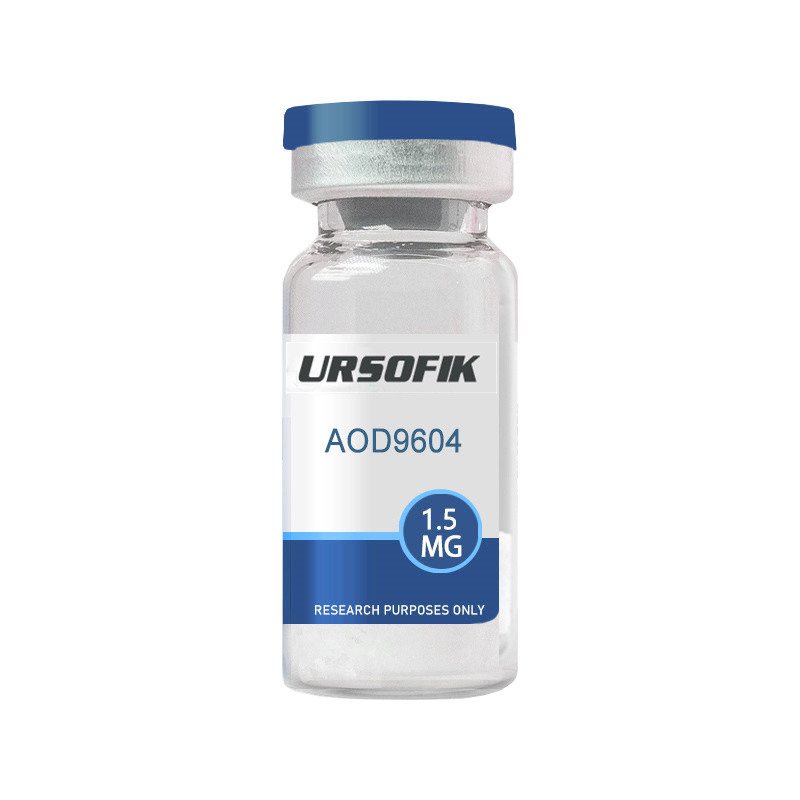
What is AOD-9604? AOD-9604 is a synthetic peptide and modified fragment of hGH, specifically the C-terminal region (amino acids 177-191). It was developed with the intention of mimicking the fat-burning properties of hGH without its muscle-building effects, which are not always desired in the context of weight loss. How AOD-9604 Works AOD-9604 stimulates the pituitary gland, similar to how natural growth hormones regulate fat metabolism. It activates lipolysis, the breakdown of fats, and inhibits lipogenesis, the formation of fats. The peptide has been shown to reduce body weight in animal studies and in some human trials. AOD-9604 and Metabolic Health Research has shown that AOD-9604 can influence lipid metabolism in several ways. It has been observed to increase lipolysis, which is the breakdown of fat, and reduce lipogenesis, the process of transforming non-fat food materials into body fat . These effects were noted in obese mice and beta(3)-adrenergic receptor knock-out mice, suggesting that AOD-9604’s actions are not mediated directly through the beta(3)-adrenergic receptor, a known facilitator of lipolysis . AOD-9604 and Weight Loss Research has shown ...
Read More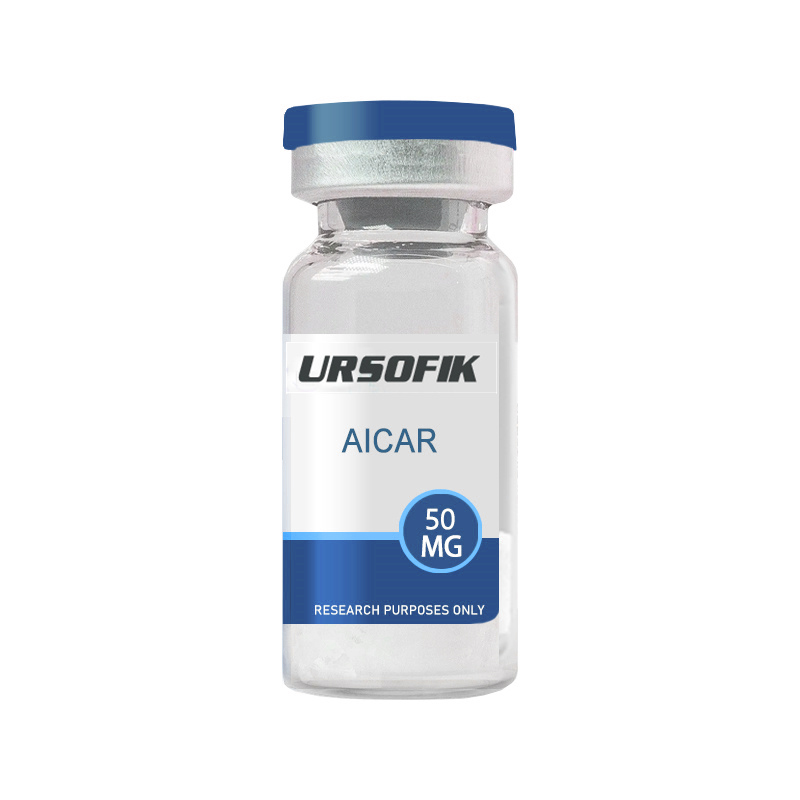
What is AICAR? AICAR, also known as 5-aminoimidazole-4-carboxamide nucleoside, is an AMP-activated protein kinase agonist. AICAR (5-amino-4-imidazolecarboxamide nucleoside) is endogenously produced from intermediates in the purine biosynthetic pathway. In human athletes, urine [AICAR] correlates with sex (male > female), season of exercise (in-competition > out-of-competition), and sport (weightlifting > football). Plasma AICAR is hypothesized to increase with exercise. An LC-MS-MS method was developed to quantify AICAR in plasma collected from racehorses immediately before and after racing. After racing, plasma AICAR levels were elevated in the majority of horses, independent of age, sex, or performance in the group. After intravenous administration of AICAR, mean arterial blood pressure decreased dramatically despite compensatory increases in cardiac output and heart rate. Exercise-induced increases in AICAR may promote vasodilation. This research was supported by the Horse Racing Drug and Testing Alliance, the Pennsylvania Horse Racing Commission, the Pennsylvania Harness Riders Association, the Meadows Standardbred Owners Association, and the Pennsylvania Riders Benevolent and Protective Asso ...
Read More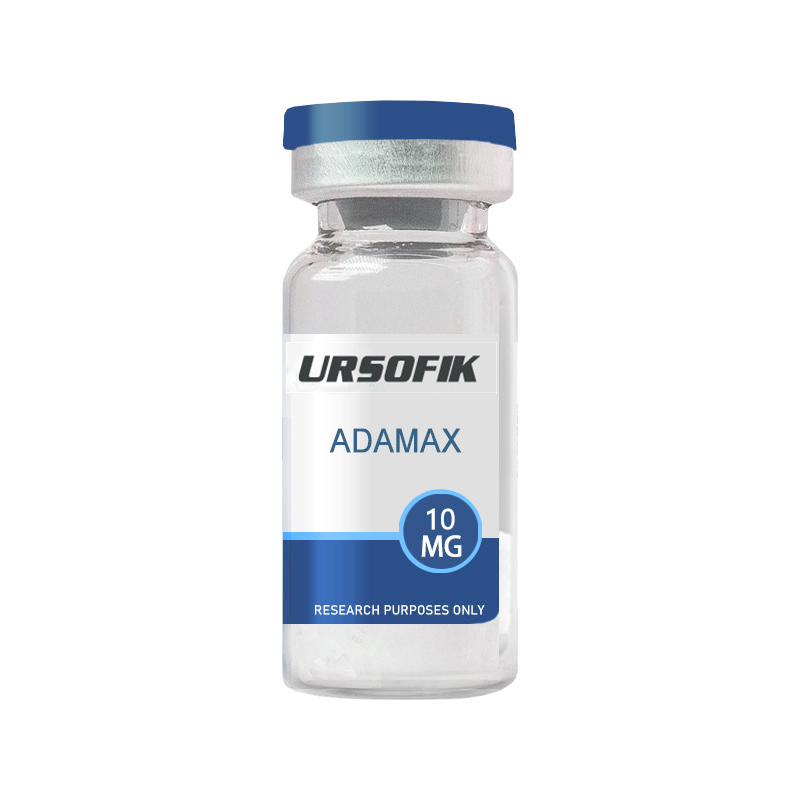
Adamax Peptide Research Adamax is a nootropic peptide that is considered an improved version of Semax, a neuropeptide. It has been gaining attention for its potential benefits in cognitive enhancement, neuroprotection, and neurogenesis. Adamax and Cognitive Function Adamax is a potent derivative of the neuropeptide Semax, known for its nootropic properties. It is believed to enhance cognitive function by increasing the levels of Brain-Derived Neurotrophic Factor (BDNF) and improving the sensitivity of TrkB receptors in the hippocampus. Research suggests that regular and sustained use of Adamax may promote long-term changes in brain function, potentially resulting in improved cognitive abilities over time. Adamax and Neuroprotection Adamax is thought to possess neuroprotective properties, which protect neurons (nerve cells) in the brain from harm, degeneration, and oxidative stress. By exerting neuroprotective effects, Adamax may help reduce the negative impacts of factors that cause neuronal loss, which can lead to conditions such as neurodegenerative disorders and age-related cognitive decline. Adamax and Neurogenesis Adamax may promote neurogenesis, the formation of new neurons. Th ...
Read More
ARA-290 Research ARA-290 is a variant of erythropoietin, engineered to selectively interact with the innate repair receptor. This peptide has been shown to decrease inflammatory pathways and promote tissue protection without the hematopoietic effects associated with erythropoietin. Research indicates that ARA-290 can help reduce HbA1c levels, improve cholesterol profiles, modulate neuropathic pain, and stimulate wound repair. ARA-290 and Tissue Repair ARA-290’s interaction with the innate repair receptor facilitates tissue protection and repair by antagonizing inflammatory processes. This action has been observed in preclinical models of neuropathy, where ARA-290 reduced allodynia and promoted healing. These properties make it a promising candidate for further research into therapies targeting tissue damage and inflammation . ARA-290 and Metabolic Control Studies have demonstrated that ARA-290 can improve metabolic control in patients with type 2 diabetes. In a clinical trial, subjects receiving ARA-290 showed significant improvements in hemoglobin A1c (HbA1c) levels and lipid profiles over a 56-day period. These findings suggest that ARA-290 may of ...
Read More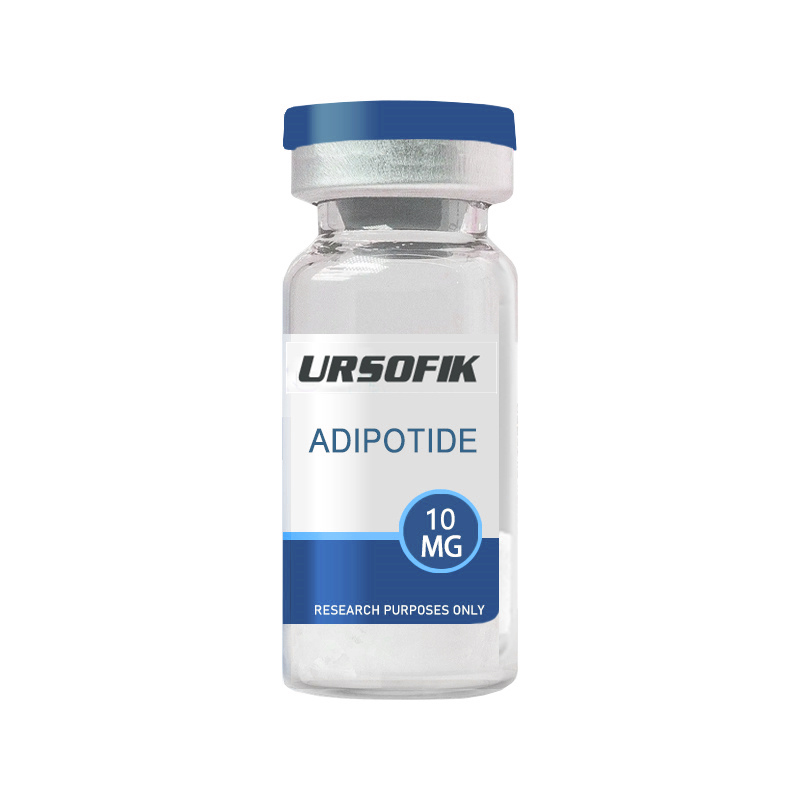
AICAR Peptide AICAR or 5-Aminoimidazole-4-carboxamide ribonucleotide, is a synthetic adenosine monophosphate analog. It was developed to stimulate the AMP-dependent protein kinase (AMPK) activity.[1,2] It is currently being investigated as a protective agent against ischemic damage in the cardiac myocytes during cardiac injury. The AMP-activated protein kinase is an enzyme and a protein that may play a regulatory role in several metabolic pathways. Its expression has been observed in several tissues, including the skeletal muscles, liver, and brain. In all these tissues, it is considered to exert a potential net effect on lipogenesis and may inhibit cholesterol synthesis and ketogenesis. It may also modulate insulin secretion and skeletal muscle fatty acid oxidation with glucose uptake. Several energy deficit states may trigger the release of AMPK, like hypoxia or hypoglycemia. AICAR Research AICAR AND THE HEART AICAR has been researched for its potential two-way protective role in protecting the heart from the ischemia associated with CVD. Inflammation is considered to be a significant contributor to the disease pathology in atherosclerosis and other heart diseases. Research ...
Read More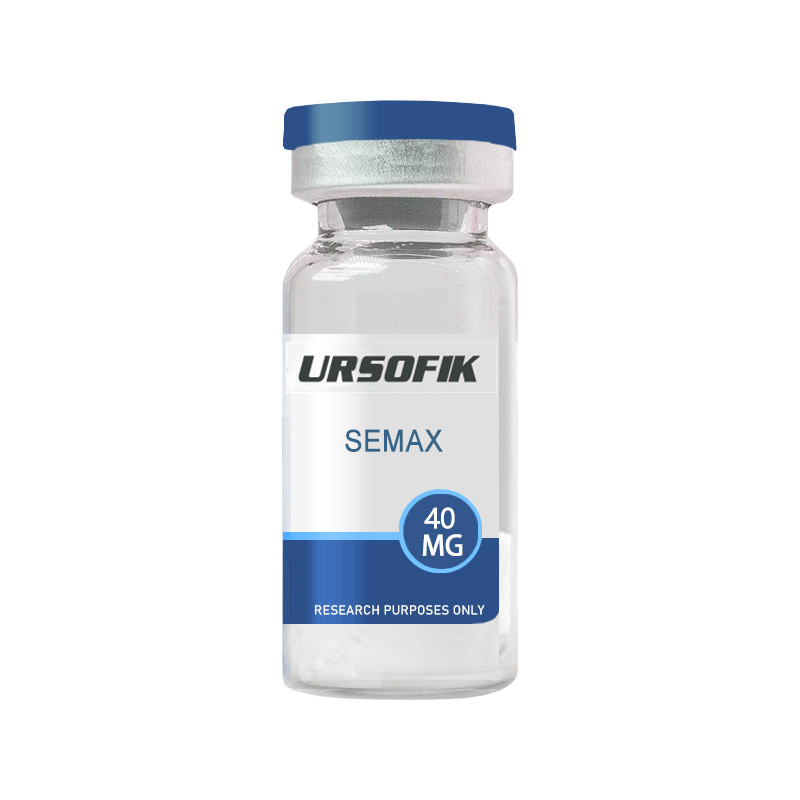
Mechanism of Action: Semax is known to stimulate neurotrophic factors in the central nervous system, namely Brain-Derived Neurotrophic Factor (BDNF) and Nerve Growth Factor (NGF). It further appears to impact serotonin, dopamine, and enkephalin signaling. Notable Studies: · Semax in the treatment of glaucomatous optic neuropathy in patients with normalized ophthalmic tone · The efficacy of semax in the treatment of patients at different stages of ischemic stroke · Synthetic ACTH analog Semax displays nootropic‐like activity in humans What is Semax? Semax is a synthetic peptide that was first developed by Russian researchers in the 1980s. It is authorized in Russia and Ukraine for indications including ischemic brain stroke, encephalopathy, optic nerve atrophy, and cognitive disorders such as dementia. Research suggests that Semax may offer potential benefits to patients suffering from a variety of neurological conditions, including Alzheimer's, traumatic brain injury (TBI), and stroke. Semax is an analog of the ACTH(4-10) peptide, the latter a fragment of adrenocorticotropic hormone (ACTH). ACTH is a hormo ...
Read More

